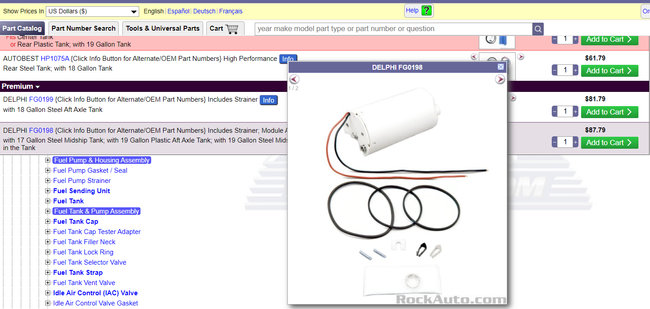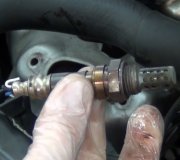Good afternoon,
Did you check the fuel pressure? If you do not have sufficient pressure, the O2 sensors readings will be off and you will have starting and driving issues.
https://www.2carpros.com/articles/repair-lean-mixture-codes-p0171-or-p0174-on-some-manufacturers
Key On Engine Off 50 - 60 psi
Key On Engine Running 45 - 60 psi
You can rent a tester at a parts store to check.
https://www.2carpros.com/articles/how-to-check-fuel-system-pressure-and-regulator
https://www.2carpros.com/articles/how-to-replace-an-electric-fuel-pump
Roy
REMOVAL
1. Raise the rear of the vehicle.
2. To avoid electrical sparking at the tank, disconnect battery ground cable. Then disconnect the fuel gauge sending unit wire at the fuel tank.
3. On vehicles with dual tanks, disconnect the ground wire after both tanks have been drained. Siphon the fuel from the tank into a suitable container at the hose between the fuel pump and the fuel tube.
4. Disconnect the fuel line push-connect fittings at the fuel gauge sending unit.
5. If the fuel gauge sending unit is to be removed, turn the unit retaining ring counterclockwise and remove the sending unit, retaining ring and gasket.
6. Loosen the clamp on the fuel filler pipe. Disconnect the filler pipe hose by pulling along the rubber inner tube from the tank filler neck.
7. If removing the metal-type tank, support the tank and remove the bolts attaching the tank supports to the frame. Carefully lower the tank and disconnect the vent tube(s) from the vapor emission control valve in the top of the tank. Finish removing the filler pipe and filler pipe vent hose if not possible in step 6. Remove the tank from under the vehicle.
8. If removing the plastic-type tank, support the tank and remove the bolts attaching the combination skid plate and tank support to the frame. Carefully lower the tank and disconnect the vent tube(s) from the vapor emission control valve in the top of the tank. Complete removing the filler pipe if not possible in step 6. Remove the skid plate and tank from under the vehicle. Disassemble the skid plate from the tank.
INSTALLATION
1. Install new support strap insulation as required.
2. If installing the plastic-type tank, assemble the skid plate and support straps to the tank.
3. Raise the tank skid plate and support assembly and attach the vent hose(s) to the vapor emission control valve.
4. Start the tank neck into the hose.
5. Position the tank assembly filler against the top straps of the frame. Install the attaching bolts and nuts using thread adhesive. Tighten the attaching bolts and nuts.
NOTE: The plastic tank attaching bolts and nuts do not utilize thread adhesive. Tighten these bolts and nuts.
6. Insert the rubber inner hose inside the tank filler neck and connect the filler pipe hose. Tighten the clamps.
7. If the fuel gauge sending unit was removed, ensure all the old gasket material has been removed from the unit mounting surface on the tank. Using a new gasket, position the fuel gauge sending unit to the fuel tank and secure with the retaining ring.
8. Connect the fuel gauge sending unit electrical connector to the sending unit.
9. Connect the fuel lines at the fuel gauge sending unit. Install the drain plug, if so equipped.
10. Connect the vehicle battery ground cable removed in Removal step 2.
11. Fill the tank and check all connections for leaks.
12. Lower the vehicle.
SPONSORED LINKS
Monday, March 15th, 2021 AT 4:05 PM





